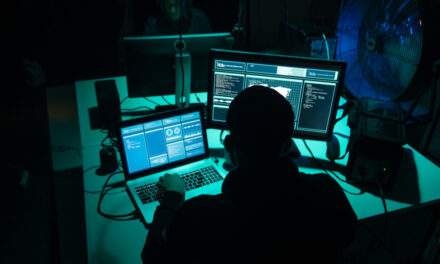While we celebrated Presidents Day here in the U.S., televisions all over the world showed familiar images of war.
Tune to any major news channel or visit any website, and you’ll see images of Russian forces deployed along the Ukrainian border, poised to invade. You’ll see no shortage of troops, tanks, and a myriad of other assault vehicles.
These are the visual depictions that we associate with armed conflict.
But there’s a whole other front in this war, and you’ll almost never see it in the news.
This new battlefront is practically invisible … unless you’re one of the few who can decipher lines of cryptic computer code.
Yet, it could be the most dangerous front of all, one that easily transcends borders and finds its way to U.S. shores.
In fact, this new conflict could be the very first where this type of warfare takes center stage.
Critical Infrastructure at Risk
Just over one year ago, a hacker infiltrated programs that control a water treatment plant serving San Francisco. They attempted to ramp up the chemicals mixed in the water to poisonous levels, threatening the lives of thousands. Thankfully, they failed.
Only three months later, another hacker group gained control of a gasoline pipeline supplying the Eastern U.S. It led to surging gas prices and long lines at the pump before the flow of fuel could be restored (and only after a ransom payment).
In both cases, the perpetrators were small groups or individual hackers.
Now imagine what a sophisticated state actor like Russia can do.
The current fighting may seem in a far-off place on the other side of the world right now.
But make no mistake, cyberwarfare can bring the fight much closer to home, disrupting your daily routine in more ways than one.
Software programs that run our critical infrastructure are already being targeted at an accelerating rate.
And even though you’ve probably never heard of it, there’s a government division called the Cybersecurity and Infrastructure Security Agency. And its director just declared that: “Every organization in the U.S. is at risk from cyber threats that can disrupt essential services…”
That threat is speeding up deployment of a new line of defenses against the threat of cyberattacks.
The Need for Speed
Most cyberattacks aren’t discovered until it’s too late.
Even major corporations that spend huge sums on security can go for months unaware that there has been a network intrusion … like how hackers spent nine months in SolarWinds’ email systems before being detected.
But by then, the damage was done.
That’s why there’s a new frontier in protecting against attacks: artificial intelligence (AI) and machine learning.
These automated applications can scan, detect and respond to the growing number of threats that are overwhelming analysts and managers who monitor and defend America’s tech infrastructure.
These programs also become “smarter” along the way learning from new datasets or changes in habits many times faster than their human counterparts.
It goes without saying that AI could become an invaluable tool in the fight against cybercrime. Possibly much sooner than you’re probably expecting.
One estimate sees the AI in the cybersecurity market alone at $38 billion in just four years … that’s a 23% compound annual growth rate from 2019 levels.
You’ll want to keep a close eye on this booming tech sector as Russia’s Ukrainian conflict continues to unfold — and for years more to come.
Best regards,

Clint Lee
Research Analyst, The Bauman Letter









